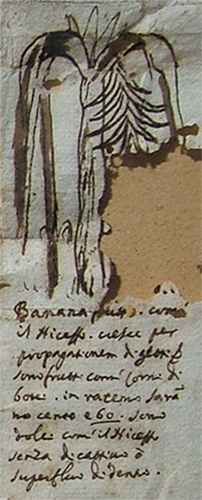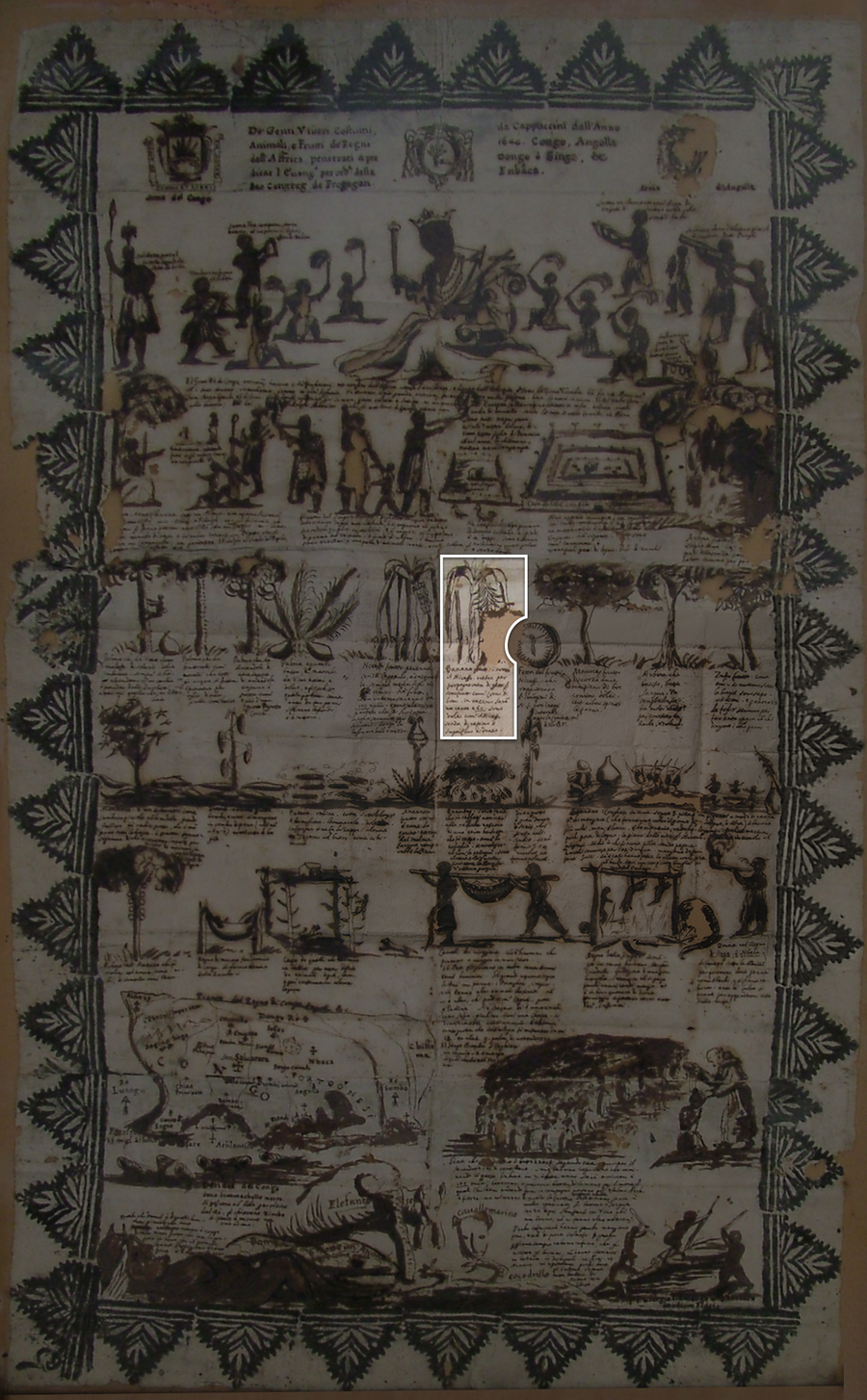Banana [Musaceae]
Banana1 frutto com’ il Niceffo. cresce per propagationem di getti & sono frutti comí corni di bove in racemo sarãno no cento e 60. Sono dolci com’il Niceffo senza di cattivo ò superflu di dentro.
Banana fruit like the Niceffo. It grows per propagationem of the sprouts & they are fruits like cow horns in bunches of about 160. They are sweet like the Niceffo without [anything] bad or superfluous inside.
- 1The friars make a distinction between Niceffo and Banana in their writings, referring to two local categories of fruits from the Musaceae family. See Cavazzi and Alamandini, Istorica descrizione, 35. Pavia, Viaggio Apostolico alle Missioni dell’Africa, f. 81r. Matheus Cardoso talks about “micifos” in 1624 see Brásio, Costa, and Correia, História do Reino do Congo, 37. Pellicer de Tovar, Mission evangelica al Reyno de Congo, 53. It appears as Mizefhos with mention of the size of the leaves “big enough to shade any sized man,” the crucifix in its flesh, and its identity as the tree of the garden of Eden in a late sixteenth century anonymous manuscript, unknown, Description of the kingdom of Kongo, f. 165r. See also the unpaginated vocabulary of words from Matamba in Antonio da Gaeta and Gioia, La maravigliosa conversione. Other mentions are found in Cadornega and Delgado, História geral das guerras angolanas, 1680[-1681], 3:372. “Niceffos” and their long leaves that could cover a man (in Brazil) and the crucifix inside appear in Dionigi da Piacenza and Michel Angelo da Reggio, Viaggio, 49; Dionigi da Piacenza and Michel Angelo da Reggio, Viaggio del P. M. Angelo de Guattini da Reggio et del p. D. de Carli da Piacienza cappuccini, 64-65.


Add new comment